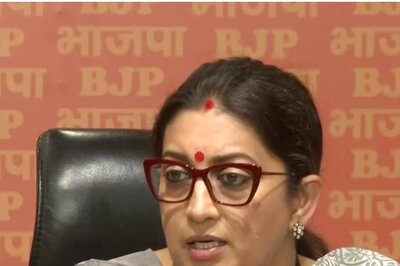
views
Prime Minister Narendra Modi’s speech to the COP26 summit saw an admirable commitment to bring India to net zero by 2070. This announcement kills several birds with one stone. Not only is this a major step forward in combating climate change but also towards ensuring greater energy access for Indians, a higher standard of living, and holds the possibility for becoming a major economic driver that puts the dream of a $5-trillion economy within grasp, if all goes well.
The operative words in his speech focused on the fact that the monitoring mechanisms to ensure the $1 trillion of climate change mitigation funding promised by the developed countries have not seen the light of day. This means that these financing promises may simply never fructify. Parallel to this, over the last few months, we have seen the Reliance Group in India making a major push towards green energy in terms of both solar as well as hydrogen.
If you add these two together, you realise what Modi’s next play is going to be: presumably asking for green technology in terms of generation, collection and storage in lieu of funding. This is a particularly smart move because it creates a turnkey green energy sector within India, including the manufacture of extremely high-end products with significant value addition within the country. The only problem is that most of the patents for these technologies are not held by the respective national governments rather by their private sectors. In such cases, two options can be looked at in lieu of funding. The first one is to declare intellectual property rights null and void, or refuse to enforce IPR protections. As perilous as this path sounds, it is not new.
ALSO READ | At COP26, Narendra Modi Took the Lead in Defending Climate but Not at the Cost of Growth
At the WIPO conference in 2003, India had taken a strident position against IPR on video and audio content arguing that content pushed the digitisation of its rural areas. This turned out to be largely true because the enthusiastic adoption of mobile phones by India’s ruling population, which seldom had access to landlines or TVs, was driven not by the utility but rather the multifunctional nature of the phone in which entertainment played the major function, be it YouTube videos or WhatsApp forward messages or music apps.
This may be the cheapest way forward. However, I seriously doubt Modi will choose this path. Instead the most likely outcome will be that he will demand significant subsidies in the cost of acquiring IPRs of green technologies by Indian companies or preferential treatment in co-manufacturing agreements of nascent technologies. This is a particularly smart move because given the enormity of the commitment he has undertaken on India’s behalf, he now has two cards to play: the IPR seizure stick or the IPR subsidy carrot.
Even a simple back of paper calculation would show that in terms of manufacturing, import substitution of fossil fuels and reducing energy transmission losses and theft, we are looking at an economy of at least $4.5 trillion over the next 10 years. A more in-depth calculation of its knockdown effects would add significantly to that number. This then opens up enormous possibilities for equitable access to energy for the country’s most vulnerable without imposing a crippling non-productive import burden while at the same time creating jobs in millions.
Most importantly, these manufacturing jobs have been combined with the national skills mission to represent a huge leap in per capita income of the average Indian factory floor worker, acting as a de facto substitute for a secondary education while also ticking off all the corporate social responsibility boxes.
The major Achilles’ heel of Indian policy-making over the last 70 years, however, has been that it has never been multidisciplinary and is frequently prone to the disease of siloisation. Yet, when we look at the sheer enormity and import of Modi’s plans and announcements that have been made in India with regard to clean energy, it becomes clear that this is no standalone announcement. Clearly, much thought and interdisciplinary knowledge has gone into its conception. The question though is (and this is India’s perennial problem) execution, especially when dependent on an inefficient bureaucracy.
ALSO READ | COP26: With Developed World Not Doing Its Bit, India’s Case for Climate Justice is Strong
Let us look at what has gone wrong so far with green energy in the EU and in the US. EU’s green fanaticism has led to massive investments in serious technology dead-ends, such as wind power. However, what Europe has going for it is its extremely organic and efficient cities and public transport. On the other hand, the United States has had the exact reverse problem. Its market-oriented policy-making means that wasteful expenditure on dead-end technologies meet their natural end. However, US cities are most unsustainable and inequitable on earth with a large urban sprawl, almost non-existent public transport, and a toxic suburban-car commuter driven model that imposes massive costs on the most vulnerable sections of society in addition to being a high energy consumer.
India’s bureaucracy needs to learn from the EU and America’s mistakes. If the PM’s dreams are to be realised in their entirety, they must be fused with a completely new approach to urban planning and regeneration of cities while reducing their sprawl and footprint drastically. At the same time, green technologies will have to be chosen with utmost caution. This is possibly the only part of this otherwise remarkably intersection policy-making that PM Modi has laid out that needs serious attention to achieve maximum potential. We seem to be on a good path and with a little more effort, and a little more caution, we can be on an even better path.
Abhijit Iyer-Mitra is Senior Fellow at the Institute of Peace and Conflict Studies. The views expressed in this article are those of the author and do not represent the stand of this publication.
Read all the Latest Opinions here




















Comments
0 comment